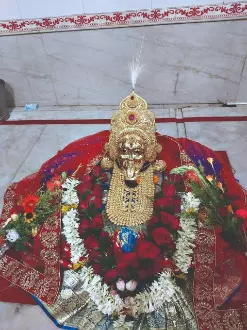Balurghat: Centuries-old Burakali Temple still glows on Diwali night

BALURGHAT: When the moonless sky of Diwali night descends upon Balurghat, thousands of lamps flicker in unison around a temple that has stood the test of time — the Burakali Mata Temple of Tuhabazar. One of the oldest Kali Pujas in South Dinajpur district, this temple carries centuries of mystery, devotion and folklore woven into the very soil beside the Atreyee River.
Long before the town of Balurghat took shape, dense forests and the serpentine Atreyee embraced this sacred site. Locals say the idol of Burakali Mata mysteriously appeared on the riverbank centuries ago. A wandering tantric (ascetic) discovered the divine figure and began her worship, marking the birth of an unbroken tradition that continues today.
Old-timers recall tales passed down through generations — of floral fragrances wafting through the forest after dusk and the mystic sound of the goddess’s anklets echoing in the still night. “Even miles away, people could sense her presence,” say the priests of the temple.
History intertwines with legend here. The temple, once visited by Queen Bhavani of Natore, was said to be part of her spiritual journey. She would travel by royal barge along the Atreyee, collect sacred water, offer her prayers and return the same night. Many devotees believe Burakali Mata’s shrine to be one of the lost Shakti Peethas, though no documented proof has yet surfaced.
From a humble tin-roofed shrine to today’s grand temple, the Burakali Puja has evolved with time, yet its soul remains the same. Amit Mahanta, secretary of the Burakali Puja Committee, shares: “Every Diwali, the road leading to the temple glows with lights and devotion. Though some rituals have changed, the faith of the devotees only grows stronger. Thousands gather from dawn till midnight, and the district administration extends full support each year.”
Tradition still breathes here — goats are sacrificed and a massive boal fish is offered as part of the sacred feast, a ritual that once saw fish weighing up to 20 kilograms. The following morning, devotees are served khichuri bhog — a practice of gratitude and community.
The temple’s priest, Ratan Bhattacharya, recalls stories told by his ancestors: “It is said that Devi Chaudhurani once came here by boat through the forested riverbanks to offer prayers. Even now, people say no wish made before Burakali Mata goes unanswered.”
As lamps flicker in the autumn breeze and chants fill the night, the Burakali Temple of Balurghat stands not merely as a place of worship — but as a living chronicle of faith, folklore, and the eternal rhythm of devotion that outlives time itself.



